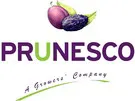Chile's D'Agen plums' fruit development period started a few weeks ago. These plums are later dried and sold to more than 70 countries in the world.
“So far it's going well. This, after a normal flowering, which wasn't as abundant as last year when there was a greater supply of flowers, but with temperate temperatures that are beneficial for the plum," stated Rosario Larrain, Prunesco's area agronomist engineer, D'Agen plum fruit advisor, and member of the Chileprunes Technical Committee.
The thinning stage in Chile was carried out until the first days of November. Producers concluded that no more than 15 to 20% of the orchards, which had trees with 6,000-7,000 fruits, had to be thinned and left with 3,000-4,000 fruits.
"Producers aim at obtaining the maximum possible yields that allow them to obtain a certain caliber, according to an orchard's productive potential, phytosanitary and nutritional status, the type of trees that compose it, and management in general. Taking all of this, and each season's commercial conditions, into account, allows us to define in the pruning the number of darts suitable for each tree." In fact, some orchards can be left with 2,500 fruits, others with 3,500 or 4,000 fruits so they deliver the expected production.
"This has been a good season," he stated. Thinning 15-20% is a moderate amount. 70% of the orchards in the Colchagua area (which concentrates most of Chile's D'Agen plums crops) have normal loads, according to the potential they have, and only 5% could have a poor flowering and a low load in relation to their potential, but that's only happening in fully identified orchards.
“There's slightly less volume than last year, but the calibers are better. The fruit is growing very well,” she stated.
In Chile, in a normal period, the dried plum harvest starts between February 5 and 8. “It's a long campaign and we shouldn't count our chickens before they hatch. However, so far everything is going well. There was a positive flowering period and rainfall, the fields' soil humidity has been optimal, there was abundant labor for the pruning activities, there was no significant frost, but there was an important accumulation of cold hours, and there was also good weather in the setting period."
For more information:
Prunesco
Avda. Ramón Subercaseaux 1712
Pirque, Santiago (Chile)
Tel.: (56-2) 2489 0000
www.prunesco.com
